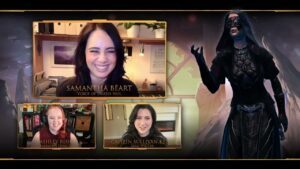If, while exploring Starfield’s vast, planet-filled galaxy, you’ve felt at times that its size and sheer number of possible destinations may actually be too much for the game’s own good, well, it sounds like some folks who were part of the development team may agree with you. Hindsight is 20/20, after all.
Starfield has around 1,000 procedurally generated planets to explore. There are definitely some interesting areas to find, but much of that terrain feels largely empty. In an interview with MinnMax (thanks GamesRadar), former Bethesda employee Bruce Nesmith, who worked on Starfield as senior systems designer, talked about the decision to make Starfield’s galaxy so massive, as opposed to smaller and more focused in scope.
In the interview, Nesmith said that player expectations around the size of Bethesda’s open-world games influenced the team to opt for this approach. The argument was made that once the team had successfully established the foundation for the game’s design philosophy in one solar system, replicating those ideas across dozens more wouldn’t add that much to the workload.
“[Game director Todd Howard] pretty much pulled the number 100 for the number of solar systems out of thin air,” Nesmith said, “but the more we went on, the more it was like, ‘OK, so all core activity takes place in these two dozen in the settled systems and the rest of it is open space, but people love our big games. They love that open area to explore, so let’s go ahead and let ‘em have it’.”
Nesmith went on to describe how developing Starfield, like any other game, was about making compromises to the original vision, and that meant more crafted areas came at the expense of player freedom and exploration, such as allowing you to build your own spacecraft and traverse a huge, expansive galaxy. While the space is bigger, Nesmith says this may have come at the expense of more meaningful things to find within it.
“I think some of the exploration stuff didn’t come through as well as it could’ve because they decided to make other choices,” he says. “And never misunderstand this. In every game studio on the face of this planet, they know the choices they’re making. They know the things that are not going to be in there. They know what the players are going to moan about. But you got to make the hard choice.”
Hopefully whatever lessons Bethesda has learned in making Starfield will be implemented in the upcoming Elder Scrolls VI. Given that the series is in a fantasy setting, it’s likely to be somewhat less vast than Starfield, so maybe it can better capture that sense of exploration without it being so full of empty, inconsequential dead space in between all the good stuff.
























